What Does It Mean When Dogs Dream? Mental Activities!
When dogs dream, it means they are experiencing a variety of mental activities, including memory consolidation and emotional processing, similar to humans during sleep.
Just like humans, dogs have a sleep cycle that includes Rapid Eye Movement (REM) sleep, the stage at which dreams occur.
During this time, dogs might twitch, move their paws, or even bark, indicating they are dreaming. Dogs’ dreams are believed to be composed of events they experienced during the day.
For example, a dog who spent the day chasing squirrels might dream about chasing squirrels. Similarly, a dog who had a playful day with its owner might dream about playing with its owner.
Dogs dream as part of their natural sleep cycle, providing them with a mental outlet to process their emotions and experiences. Understanding their dreams helps us better comprehend their needs and emotions.
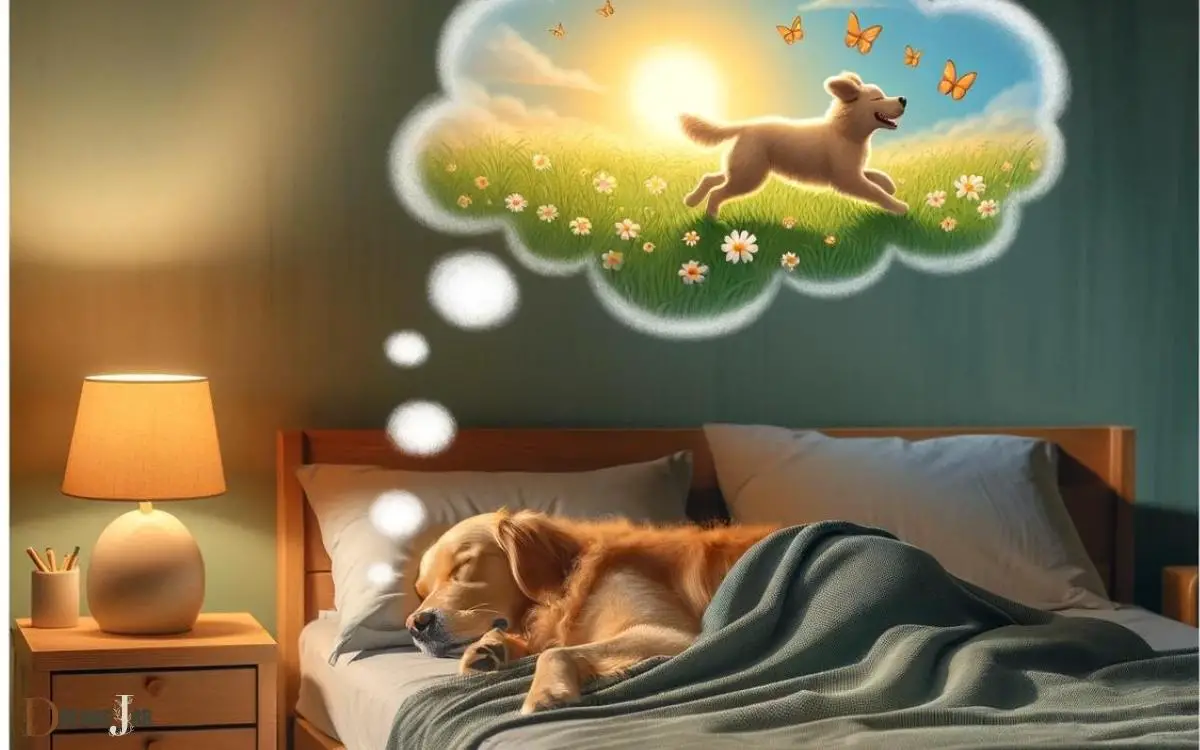
Key Takeaway
Sleep Stages and Dog Brain Activity
Sleep stages in dogs are characterized by distinct patterns of brain activity.
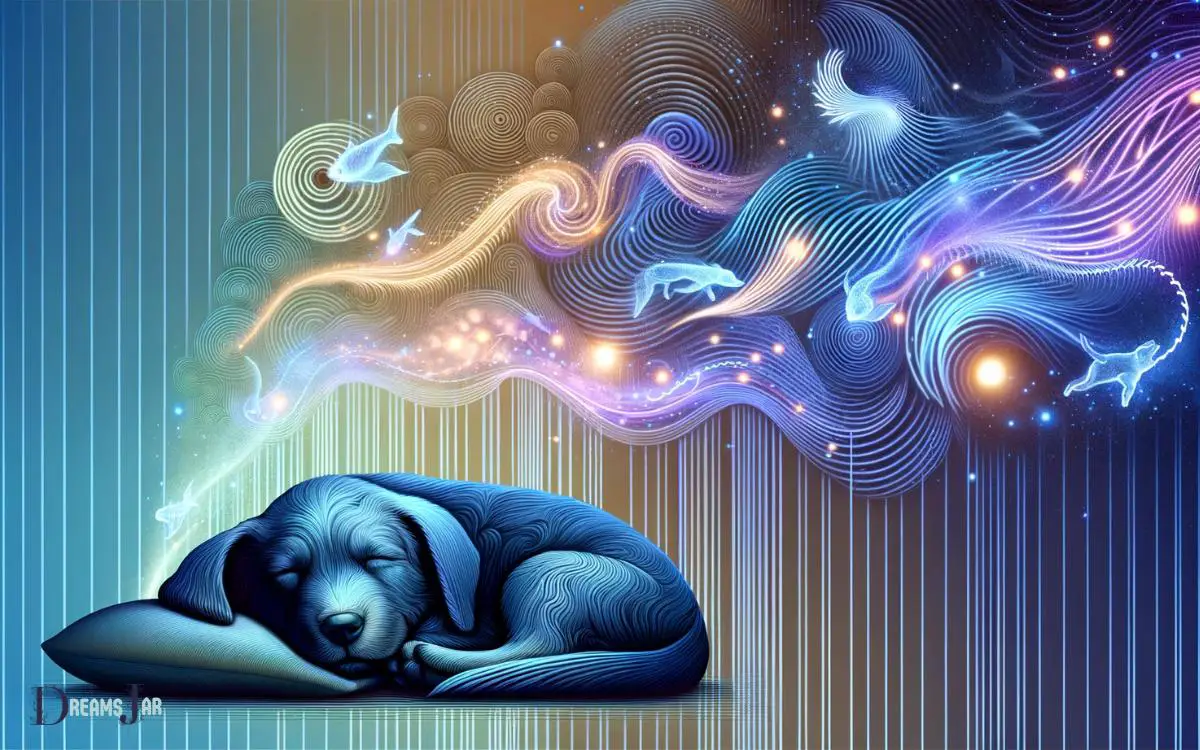
- Just like humans, dogs experience different stages of sleep, including REM (rapid eye movement) sleep, which is the stage associated with dreaming.
- During REM sleep, the brain becomes highly active, and the eyes move rapidly beneath closed eyelids.
- This is when dogs may exhibit behaviors such as twitching, paw movement, and even vocalizations.
- Studies have shown that dogs have similar sleep patterns to humans, with cycles of REM and non-REM sleep.
- However, the duration and frequency of these sleep cycles may vary among different dog breeds and individual dogs.
Understanding the science of dog dreams requires a deeper exploration of the neural processes and potential significance of these dream-like experiences, which will be discussed in the following section.
Understanding the Science of Dog Dreams
To comprehend the science behind dog dreams, an exploration of the neural processes and potential significance of these dream-like experiences is necessary.
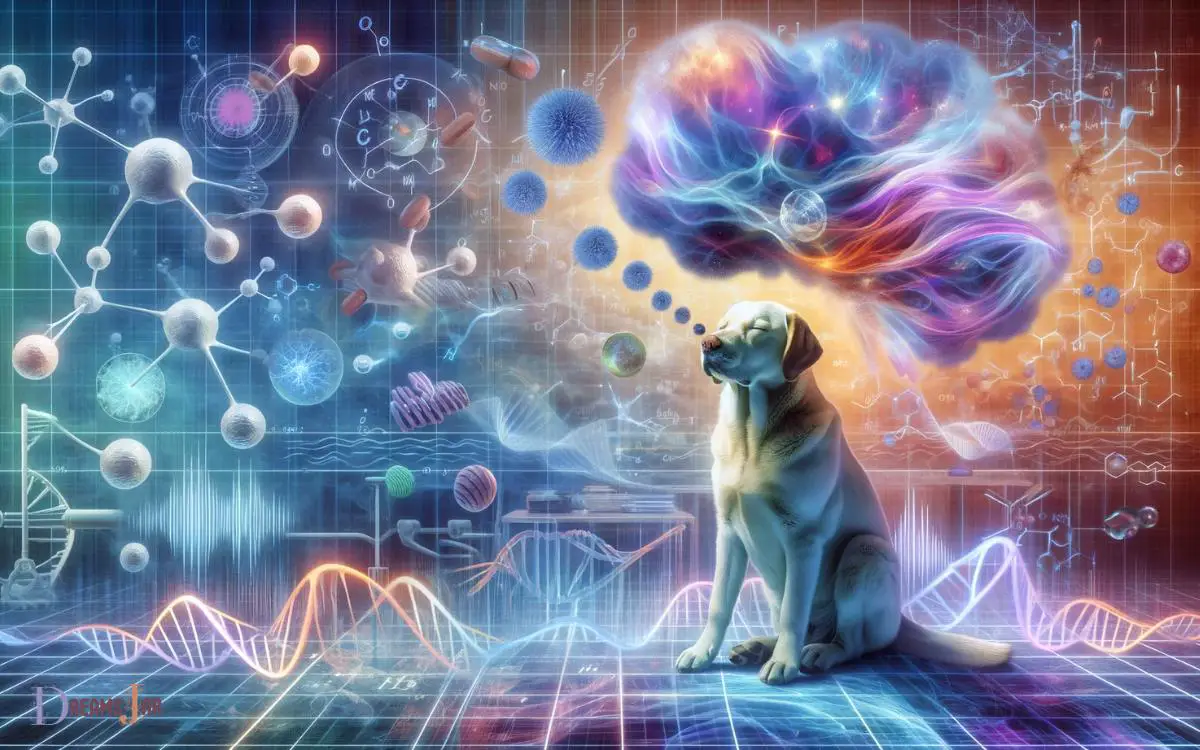
Understanding the underlying mechanisms of dog dreams can shed light on their behavioral and cognitive functions.
Here are four key aspects to consider:
- Neural activity: Studies have shown that during REM sleep, when dreams occur, dogs exhibit brain patterns similar to those observed in humans. This suggests that dogs experience dreams in a similar manner.
- Memory consolidation: Dreams play a crucial role in memory consolidation. It is believed that dogs, like humans, use dreams to process and store information, helping them learn and remember.
- Emotional processing: Dreams may provide a means for emotional processing in dogs. Just as humans use dreams to work through emotions, dogs may use dreams to process and regulate their own emotional experiences.
- Evolutionary significance: Dog dreams may have evolutionary significance, serving as a mechanism to practice and prepare for real-life scenarios, such as hunting or social interactions.
Common Behaviors Exhibited During Dog Dreams
During dog dreams, various behaviors are commonly exhibited, providing insight into the fascinating world of canine sleep.
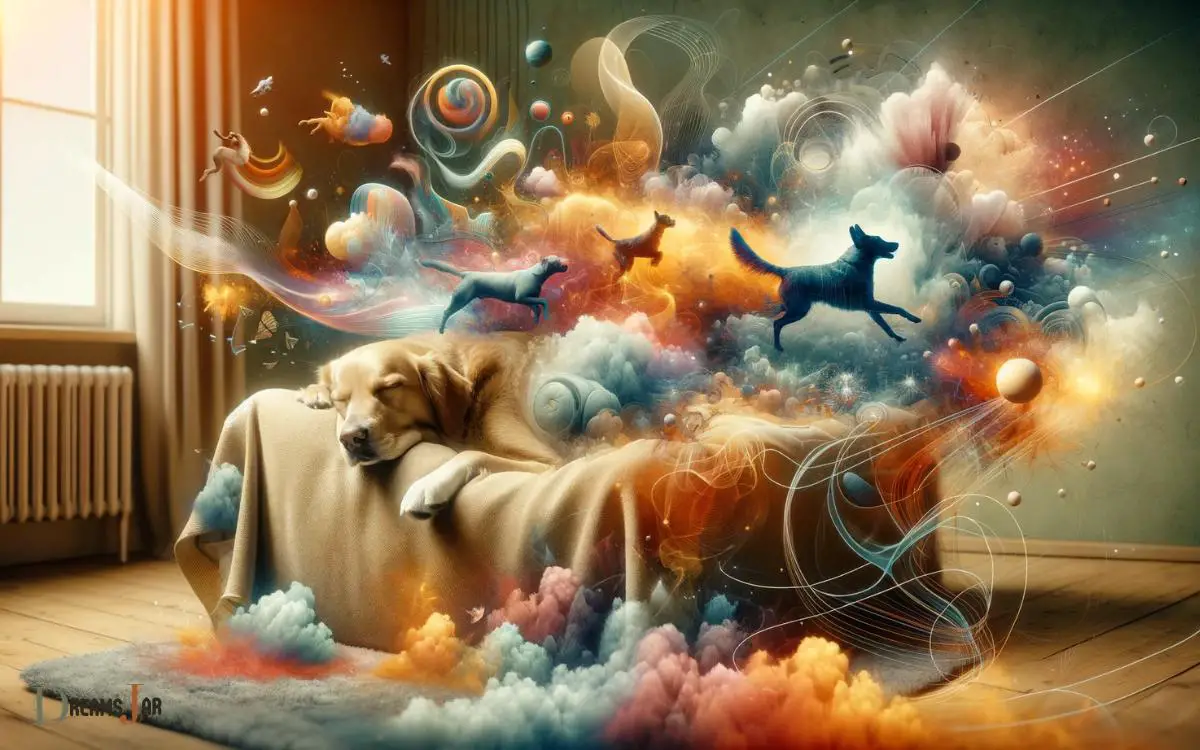
- Dogs often twitch their legs, wag their tails, and make soft vocalizations during these dreaming episodes. This behavior suggests that dogs experience vivid dreams similar to humans.
- The twitching of legs may indicate that the dog is engaged in running or chasing something in its dream.
- Tail wagging could signify excitement or joy, while vocalizations may be an indication of communication or reacting to the dream scenario.
- Some dogs may also exhibit rapid eye movement (REM) during their dreams, which is a characteristic feature of deep sleep associated with intense dreaming.
These behaviors observed during dog dreams highlight the complex cognitive and emotional lives of our canine companions, providing a glimpse into their rich dream experiences.
Potential Meanings and Interpretations of Dog Dreams
Dog dream interpretations offer insights into the possible meanings behind the vivid experiences our canine companions have while sleeping.
While it is challenging to determine the exact significance of a dog’s dream, researchers and experts have proposed several potential interpretations.
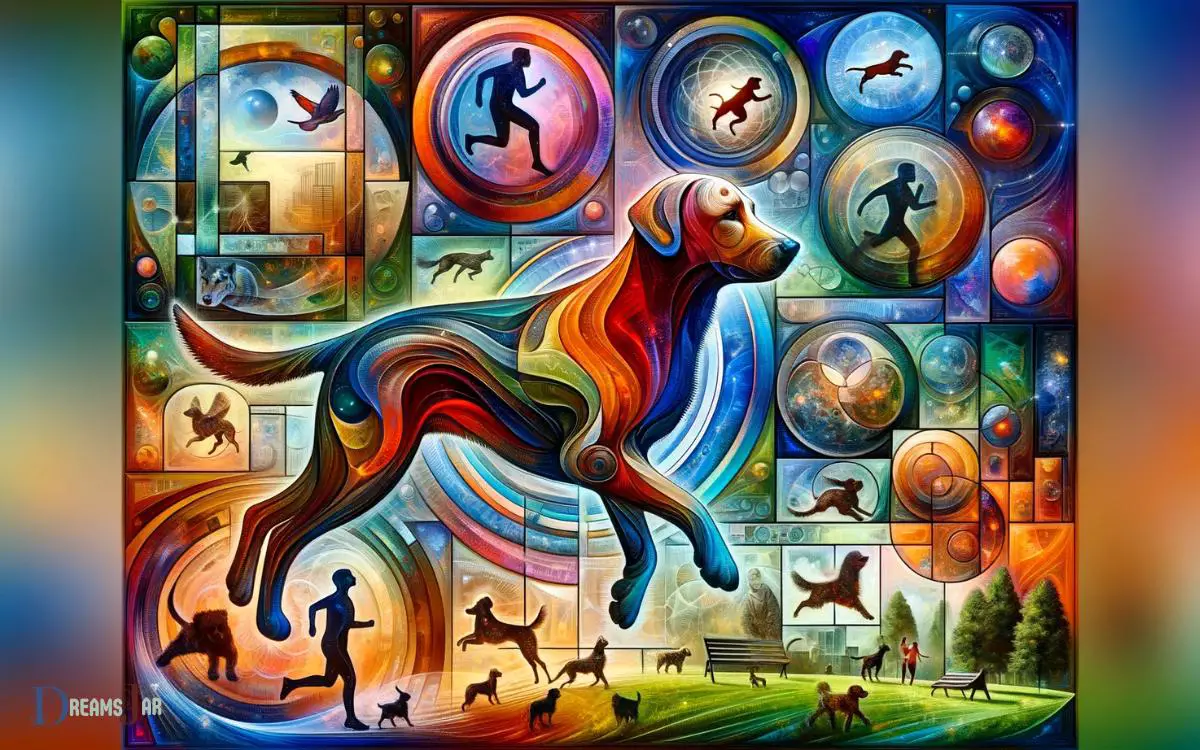
- Memory processing: Dogs often dream about events or experiences from their daily lives. Dreams help them process and consolidate memories, similar to humans.
- Emotional regulation: Dogs may dream about situations that evoke strong emotions, such as fear or joy. Dreaming allows them to regulate these emotions and prepare for similar situations in the future.
- Problem-solving: Dreams can serve as a problem-solving mechanism for dogs. They may dream about challenges they face and explore potential solutions.
- Physical and mental stimulation: Dog dreams can provide mental and physical stimulation, helping to keep their brains active and engaged during sleep.
Understanding the potential meanings behind dog dreams can deepen our understanding of our furry friends and contribute to their overall well-being.
Tips for Ensuring Your Dog’s Dreamtime Is Restful
One essential tip for ensuring a restful dreamtime for your canine companion is to establish a consistent sleep schedule.
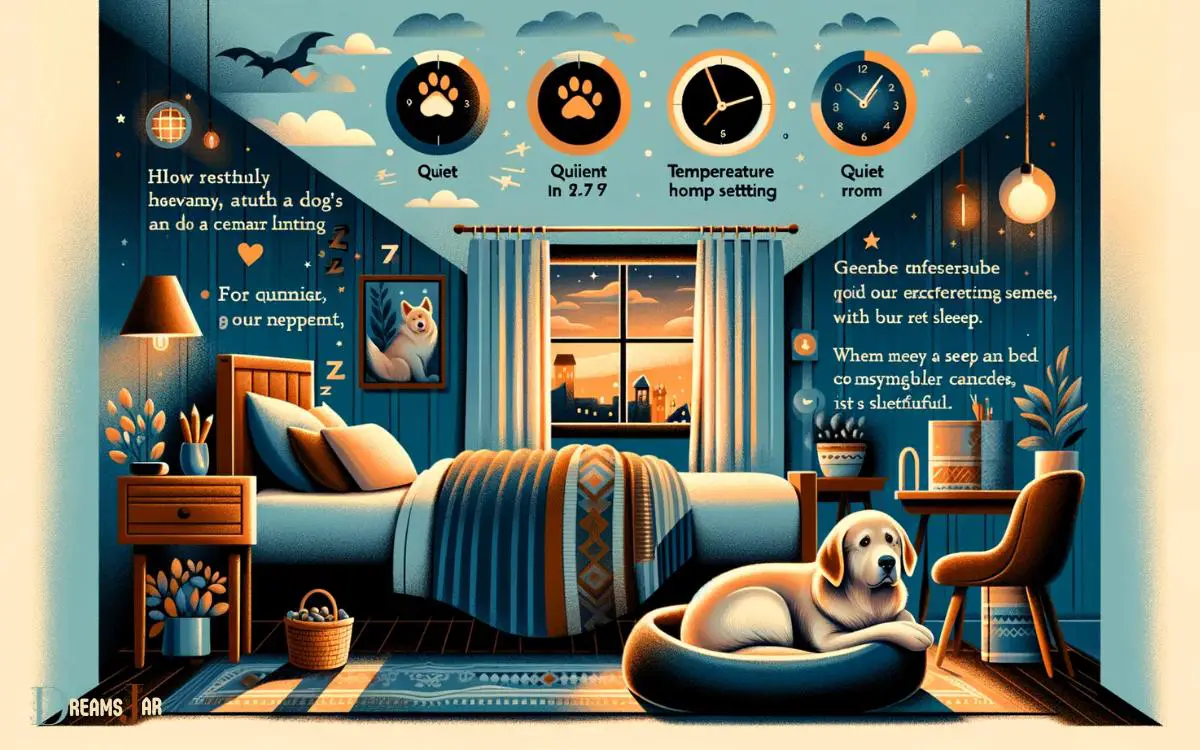
- Dogs, like humans, benefit from a regular routine and providing them with a structured sleep pattern can promote better sleep quality.
- Additionally, creating a comfortable sleep environment is crucial. This includes providing a cozy bed, ensuring proper temperature and ventilation in the sleeping area, and minimizing noise and distractions.
- Another important aspect is to engage your dog in physical and mental activities during the day to help them expend energy and promote a deeper sleep at night.
- Lastly, it is essential to maintain a healthy diet and monitor your dog’s water intake to prevent discomfort during sleep.
By following these tips, you can help ensure your dog’s dreamtime is restful and rejuvenating.
Conclusion
The study of dog dreams reveals that these animals experience similar sleep stages as humans and exhibit various behaviors during their dreamtime.
While the exact meanings and interpretations of dog dreams are still not fully understood, it is believed that they may reflect their daily experiences, emotions, and memories.
Providing a comfortable and stress-free sleeping environment can contribute to ensuring that dogs have restful dreamtime, which is akin to a sanctuary of tranquility for their wandering minds.






